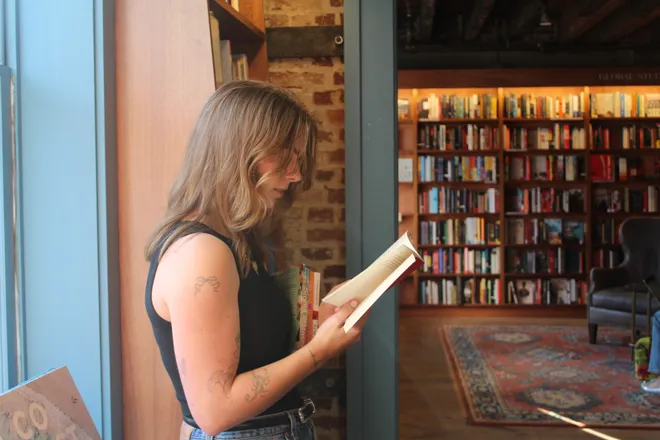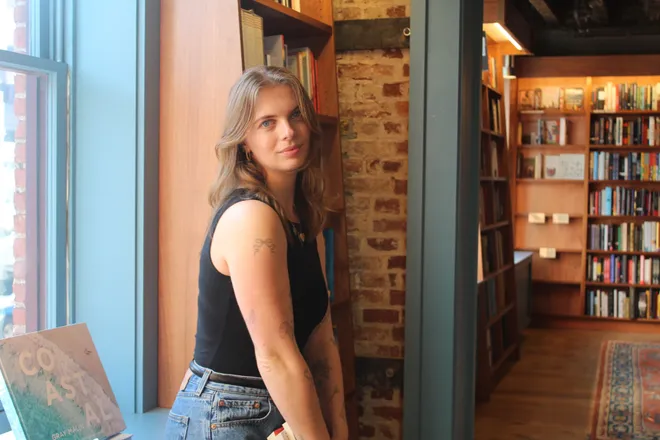Want to get on BookTok? Tips from creators on how to find the best book recommendations
Are you a fan of those ASMR slime videos on TikTok? How about cooking videos? Mini stand-up comedy specials? There’s a niche for everyone on the app, including people who spend most of their time reading books.
We’re talking about BookTok of course, a place where book lovers come to connect and share recommendations for the next great read.
Looking to get out of a reading slump or make new friends? Here are tips from BookTok creators about how to get the best experience on the most well-read side of TikTok.

What is BookTok?
BookTok isn’t a separate app – it’s a subsection of TikTok that you can get on just by typing the word “BookTok” in the search bar. When people say they’re “on BookTok” it means either they create book-related videos or have a “for you page” full of them.
Check out: USA TODAY's weekly Best-selling Booklist
“It’s like a big virtual ongoing book club where there’s always someone who wants to read the book you do, somebody wants to talk about the same kinds of books you like,” says Kelsey Bogan, a high school librarian from Pennslyvania who runs the “Don’t Shush Me” blog.
How to get involved on BookTok
While you can use BookTok exclusively to find new recommendations, there are also book clubs born on the app where users can find virtual and in-person communities.
New York-based content creator Nina Haines found this in Sapph-Lit, a sapphic book club she created and has lovingly dubbed her “sweet little gay corner of the internet.”
Sapph-Lit is a product of queer BookTok, a side of BookTok where users share the latest LGBTQ+ reads. It now has about 8,000 members in 60 countries, but started on BookTok with a comment on one of Haines’ book-related videos in 2021: “Can we start a book club”.
Since its genesis on TikTok, the group has found a home on the community app Geneva, on monthly Zoom calls and even in the streets of New York. Haines has seen IRL friend groups form from Sapph-Lit and even hosted unofficial bar takeovers and in-person book swaps.
Sapph-Lit has been credited by some members as the first queer community they’ve felt safe in or the reason they came out to their parents, Haines says. And at the heart of this warm and fuzzy feeling is books.
“Sapphics and queer women in history have been rendered invisible for so long,” Haines says. “I want to use the power that Sapph-Lit has granted me to uplift stories of authors and writers and voices that wouldn’t be on popular BookTok.”

Inspired to start a bookish TikTok community of your own? Haines says to lead with vulnerability and aim to be a bridge between people who are looking for similar connections.
“Push the snowball off the cliff and it’ll start getting bigger itself,” she says. “Ask what (users) want, ask for feedback.”
Bi representation:Why ‘Big Bisexual Books’ are important to readers
Which BookTok book should I read?
Step 1: Figure out what genres you like to read
Do a quick keyword search in TikTok and you’ll find yourself on BookTok easily, but maybe not the side of BookTok you want.
“People always make the joke that ‘I don’t know why everyone raves about BookTok, it’s always the same five authors being promoted,’ and I think that is causing a barrier,” Bogan says. “People are hitting that wall and not knowing why.”
If you’re a fan of romance or fantasy, you’ve likely found your place on BookTok already, but others may have a harder time finding their niche. Before you go digging down the BookTok rabbit hole, first figure out which genres are appealing to you.
“Taste is subjective, and I think often on BookTok people can get very vitriolic,” Haines says. “Don’t feel gaslit by the comments section. If you didn’t like something, use that as information and just keep reading.”
Bookseller and BookTok creator Sera Wright recommends looking to movie and TV preferences to guide your book taste. Are you an action movie lover? Romance? Thriller? You can even get more specific with tropes you enjoy – do you like movies that involve love triangles? Murder solving senior citizens?
This is your “trial and error period,” Wright says. Before she started posting on TikTok consistently, Wright says she spent an entire year scoping out the different sides of BookTok to find her favorites, which include the “friends to lovers” and “grumpy sunshine” tropes as well as paranormal rom-com and hockey romances.
Step 2: Search specifically
There are a couple of ways to game the TikTok algorithm so it shows you the genres you like. One hack Haines recommends is to shape your “Following” feed. Find a creator that you connect with – try searching for a book you like and find someone with similar taste – then follow them. The more you interact with their videos by liking, sharing and commenting, the more the algorithm will feed you similar content.
Just as BookTok is a subsection of the broader TikTok app, there are even more niche sides of BookTok. To find topics, try searching some of these key terms based on your preferences:
- Horror BookTok
- Queer BookTok
- Romance BookTok
- Spicy BookTok (Rated R romance BookTok content)
- Fantasy BookTok
- Classics BookTok
- Sci-Fi BookTok
- YA BookTok
- HistFic BookTok (Historical Fiction)
- Memoir BookTok
- Banned BookTok
How to diversify your BookTok recommendations
Many popular BookTok videos involve books by white, cisgender, heterosexual authors and feature characters with similar identities, something Wright says frustrates her as a Black creator and bookseller.
“You have to put the descriptor ‘Black BookTok,’ ‘BIPOC BookTok,’ but then you have to go deeper. If you want a non-fiction book by a BIPOC person, you have to look up ‘BIPOC non-fiction BookTok,’” Wright says. “People don’t think about that – why do I have to add a descriptor just to see books by people with my same skin tone?”
In an ideal world, Wright says she would love to type in “BookTok” and see authors and characters of varied identities and experiences. But that can’t happen, she says, if readers and BookTok users aren’t actively diversifying their BookTok recommendations, something she’s used her platform to discuss.
“If you were to go to your bookshelf right now and you were to pick out all the books that you have about BIPOC stories by BIPOC authors, how many would come off your shelf?” she prompts followers in one video.
She points to Black History Month when many non-Black creators post recommendations of books by Black authors.
“They don’t make it a habit in their life, so the (month) passes and the algorithm just goes right back to what it was, right back to reading books by white authors,” Wright says. “I do think that it would change the algorithm immensely if (white creators) didn’t treat it as so much of a trend; if it was just normalized.”
How to use BookTok for your library or bookstore
Do you make being a bookworm your 9-5 job too? Good news – there may be a use for BookTok at work as well. Bogan says she’s seen a “drastic increase in reading” at her library since the popularity of BookTok skyrocketed during the pandemic.
“When we look to see which titles circulate the most in a year there, it’s always seven out of 10 of them are ones I know have been trending on BookTok,” Bogan says. “It’s a definitive, noticeable impact. It’s kind of thrilling.”
Bogan says librarians, particularly for high school-age readers and up, should be using BookTok as a primary collection development resource. Bogan’s library has a table marked “Popular on BookTok.”
“If you serve teens or adults as a librarian, not checking BookTok would be like not checking the New York Times Bestseller,” she says.
It’s also a way to connect with a bookish community, something Wright has done running the TikTok account of Resist Booksellers, an independent, Black-owned bookstore in Petersburg, Virginia. One day it’s videos about author events, the next it’s a “day in the life” recap of a bookseller, the next it’s a Barbie audio.
Bogan says she employed a similar tactic with her school’s library TikTok account during the pandemic, sharing programming, humor and recommendations on what she calls her virtual “community bulletin board.”
“I always think of social media – TikTok and Instagram for us – as being a window and a tether to help the community connect,” Bogan says.
Check out:USA TODAY's weekly Best-selling Booklist
Disclaimer: The copyright of this article belongs to the original author. Reposting this article is solely for the purpose of information dissemination and does not constitute any investment advice. If there is any infringement, please contact us immediately. We will make corrections or deletions as necessary. Thank you.







